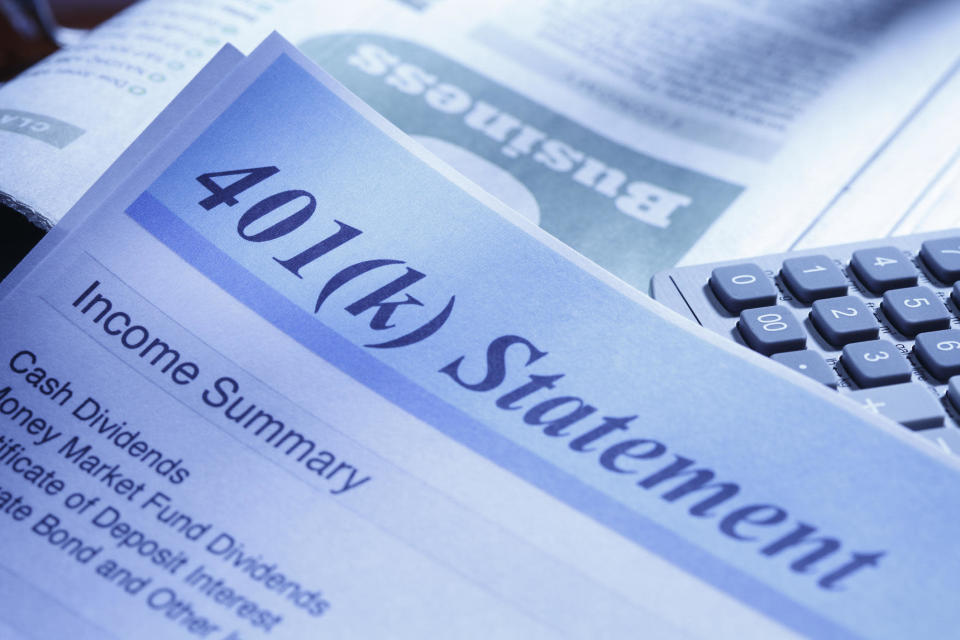
Having enough money in retirement often requires decades of careful planning, saving and investing. For many Americans, retirement planning runs through their employers via 401(k) plans.
These vehicles enable employees to direct part of their paychecks into tax-advantaged investment accounts that they can withdraw from in retirement. Around 60 million people in the U.S. actively participate, according to the Investment Company Institute (ICI).
But even though employers handle the heavy lifting of setting these plans up and provide benefits like company matching, individuals still have to manage their 401(k)s in ways that set them up for retirement success. If you don’t use the account properly, you might not save enough or could pay unnecessary fees and penalties.
If you’re looking to explore your retirement options – or want to roll over an existing 401(k) – then consider the benefits of a Roth IRA, too.
For current 401(k) participants, however, make sure to watch out for these three common errors:
1. Missing the match
You might feel like you don’t have enough money to save in your 401(k) but think twice before turning down company matching. A match means your employer will put the same amount into your 401(k) that you do, typically based on a maximum percentage of your salary,
“Many 401(k)s have a 3% of compensation employer match or greater, so if you do not defer at least this amount, you are simply choosing to turn away free money,” says Sathya Chey, co-founder and managing partner at Arise Private Wealth.
Even if your employer doesn’t offer a match, still consider investing, given the structural benefits of a 401(k), e.g., deferring taxes until withdrawal. Yet some people make the mistake of not contributing at all, says Chey.
“401(k) plans are such an easy, tax beneficial and typically low fee way of investing,” she adds.
2. Over/under-analyzing
Another 401(k) error can be either over or under-analyzing your choices within the plan. In terms of overanalyzing, try not to get too caught up in short-term changes.
“Once you’ve decided on an investment allocation appropriate for you, avoid the emotional stress and stick to checking your values a few times a year, keeping your long-term investment perspective in mind,” says Chey.
On the other hand, you don’t want to take a permanent set-it-and-forget-it mentality. You still need to analyze what investments make sense for your situation, such as adjusting your allocations to fit your risk tolerance over time.
“As you near retirement, you should be moving toward a more conservative allocation to limit any big declines immediately prior to retirement,” says Chey. For those who don’t want to handle this change on their own, consider target-date funds if your plan offers them, she adds. “As you approach the specified retirement year, the fund will automatically move toward a more conservative allocation.”
Speak to an expert now who can guide you on ways to grow your money tax-free.
3. Ignoring fees and penalties
Participants should also avoid the mistake of ignoring 401(k) fees and penalties. When choosing your investments, you might have several options with varying annual fees. A mutual fund that charges 0.5% per year vs. 1%, for example, might not seem like much of a difference. But over time, that can add up. Similarly, if you change jobs, you might decide whether to keep your investments within your former employer’s plan or perhaps roll the assets into an IRA or Roth IRA. Yet due to the size of employer-sponsored plans, they can often offer funds with lower fees than what you could buy as an individual. Explore your Roth IRA rollover options here.
That difference can lead to a big impact on total savings. Not only do fees directly lower your balance, but having less in your portfolio affects compounding growth potential.
That doesn’t mean you should never roll over assets or choose certain higher-fee funds, but be mindful of fees in any retirement planning context. Also watch out for penalties, like if you withdraw money early from your 401(k). Unless you meet certain requirements, like facing a qualifying hardship, taking money out of the plan before you turn 65 can lead to an additional 10% income tax on the funds. Plus, taking the money out, along with paying penalties, reduces your ability to compound savings over time.
How to correct 401(k) mistakes
If you’ve made any of the aforementioned mistakes, don’t worry. In many cases, you can make changes to get back on track.
“There is typically no time frame restriction on when you can make changes to your deferral amount or investment options,” says Chey.
So, if you want to start taking advantage of company matching by upping your contribution, or perhaps switch to lower-fee funds, you can often quickly do so. Your plan also might offer resources to help.
“If you have made some of these mistakes and need help figuring out the best way forward, call the plan’s financial advisor team or help desk,” says Chey.